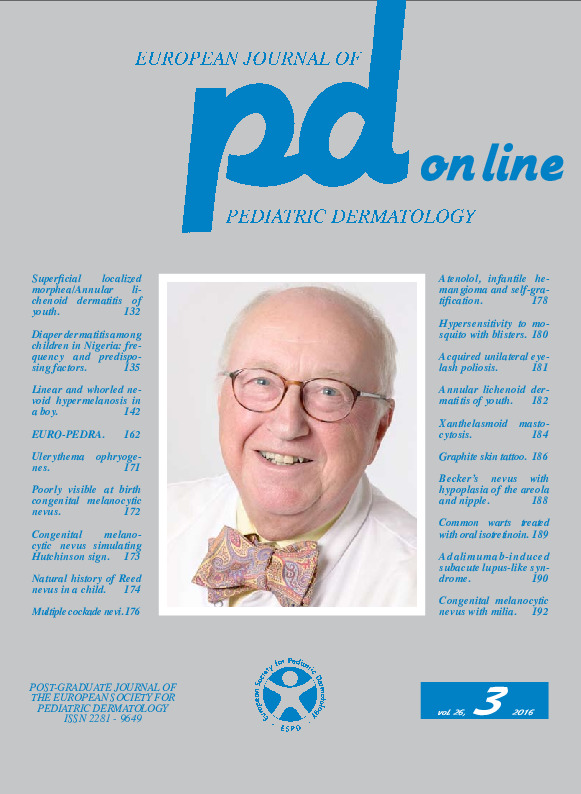Xanthelasmoid mastocytosis.
Downloads
DOI:
https://doi.org/10.26326/2281-9649.26.3.1264How to Cite
Bonifazi E. 2016. Xanthelasmoid mastocytosis. Eur. J. Pediat. Dermatol. 26 (3):184-5. 10.26326/2281-9649.26.3.1264.
pp. 184-5
Abstract
Xanthelasmoid mastocytosis (XM) is not exceptional, although in the literature only fifteen cases are reported; according to some Authors 25% of cases of childhood mastocytosis really present xanthelasmoid lesions (5).XM poses some problems, the first of which is to understand what is responsible for the yellow color: according to many Authors (6, 7) it depends on massive infiltration of the superficial and mid dermis by mast cells; indeed the yellow color is never found in macular mastocytosis; in some cases it may be related to excessive vascularization (4). A second problem is diagnostic; the yellowish color often leads to suspect juvenile xanthogranuloma and sometimes only histology can resolve this doubt; taking into account that we are dealing with two frequent hyperplastic disorders of the early years of life, the two diseases can coexist (2); XM must also be differentiated from other xanthomas and pseudoxanthoma elasticum (4). A final problem is if the xanthelasmoid aspect is a negative prognostic factor, and in particular whether it is associated with a longer persistence of the disease (1); according to other Authors (3) the xanthelasmoid appearance would have no prognostic relevance, especially no relation to systemic involvement.
Keywords
Mastocytosis, Xanthelasmoid

